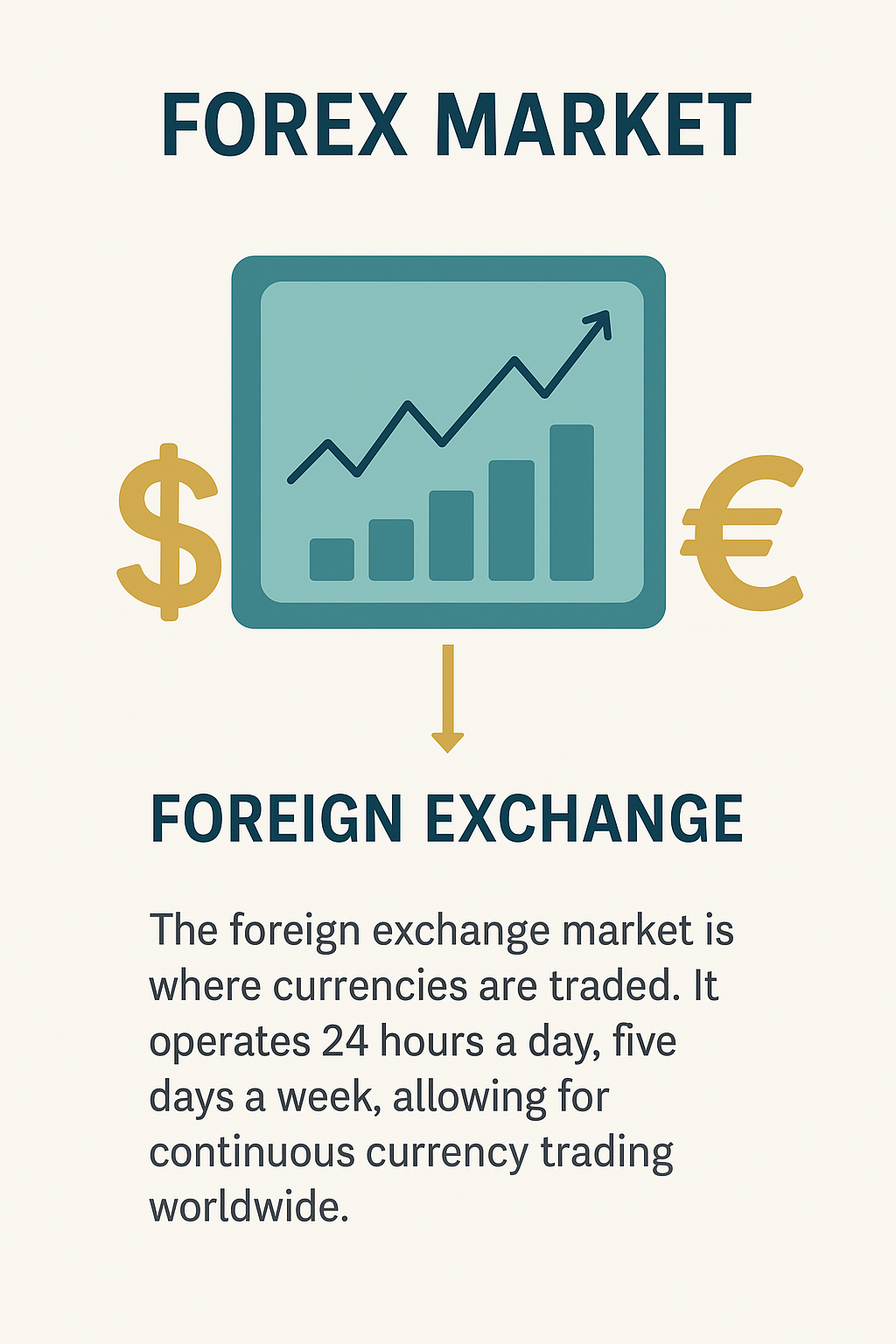Understanding the Forex Market
📌 Introduction

The Foreign Exchange Market (Forex or FX) is the world’s largest financial market, where currencies are bought and sold. Unlike stock exchanges that operate in specific locations, the forex market is decentralized and operates 24 hours a day, five days a week. Trillions of dollars are traded daily, making it one of the most liquid and dynamic markets in the world.
In this article, we will explore the basics of forex trading, how the market works, who participates, and the key factors that influence currency prices.
📌 What is the Forex Market?
The forex market is where one currency is exchanged for another. Since currencies are always traded in pairs, you are simultaneously buying one currency and selling another.
For example:
- EUR/USD = 1.10 means 1 Euro is worth 1.10 US Dollars.
📌 Key Participants in the Forex Market
- Central Banks & Governments – Influence currency supply through monetary policies.
- Commercial Banks – Facilitate trades for clients and themselves.
- Corporations – Trade currencies for international transactions.
- Institutional Investors & Hedge Funds – Trade for profit and hedging strategies.
- Retail Traders – Individuals trading via brokers using online platforms.
📌 Currency Pairs in Forex
Currencies are quoted in pairs:
- Major Pairs: EUR/USD, GBP/USD, USD/JPY, USD/CHF
- Minor Pairs: EUR/GBP, GBP/JPY, AUD/JPY
- Exotic Pairs: USD/INR, USD/TRY, USD/ZAR
📌 How Forex Trading Works
- Bid Price – The price at which traders can sell a currency.
- Ask Price – The price at which traders can buy a currency.
- Spread – Difference between bid and ask price (broker’s commission).
- Leverage – Allows traders to control large positions with small capital (but also increases risk).
📌 Advantages of the Forex Market
- 🌍 Global Accessibility – Trade from anywhere with internet access.
- ⏰ 24-Hour Market – Runs continuously from Monday to Friday.
- 💧 High Liquidity – Easy entry and exit due to massive trading volume.
- 📉📈 Opportunities in Rising & Falling Markets – Traders can profit from both uptrends and downtrends.
📌 Risks in Forex Trading
While forex is attractive, it carries risks:
- High Volatility – Currency prices can change rapidly.
- Leverage Risk – Increases profits but also magnifies losses.
- Geopolitical & Economic Events – News, inflation data, interest rate changes impact currencies.
📌 Factors Affecting Forex Rates
- Interest Rates – Higher rates attract foreign capital, strengthening currency.
- Inflation – High inflation weakens purchasing power, lowering currency value.
- Economic Growth – Strong GDP boosts currency demand.
- Political Stability – Countries with stable governments attract more investment.
- Global Events – Wars, pandemics, or trade conflicts move forex markets.
📌 Conclusion
The Forex Market is an exciting financial arena that offers huge opportunities for traders but also involves significant risks. Understanding the basics of currency pairs, market participants, and economic factors is the first step toward becoming a smart trader.
📌Disclaimer – At BullBearFin, we don’t provide trading tips but focus on helping you understand financial markets better so you can make informed decisions.

Post Comment